The Battle of Chickamauga
The Battle of Chickamauga was a Confederate victory during the American Civil War. Fought in Georgia, the battle was part of the overall struggle for control of Chattanooga. 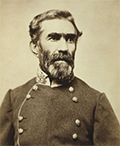
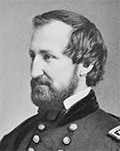
In the summer of 1863, Union Maj. Gen. William S. Rosencrans (right) and the Army of the Cumberland were advancing on Chattanooga, considered to be the "Gateway to the Deep South." The Union troops had left Murfreesboro, Tenn., and were marching toward Chattanooga. On the northeastern outskirts of Chattanooga, along the Tennessee River, were elements of the Army of Tennessee commanded by Braxton Bragg (left). Rosencrans didn't do exactly as advertised, having conducted a series of misdirections to hide the real path of his army, which was streaming along to the southwest of the city, more toward Georgia. Bragg made the tactical decision to leave Chattanooga and engage the Union army. The Union army had moved in three units, which had become separated. On September 17, Rosencrans aimed for all three units to meet up at Lee and Gordon's Mill on Chickamauga Creek. The city of Chickamauga was in Georgia, 12 miles southwest of Chattanooga. Bragg, meanwhile, planned to move to the north of the mill and hit the Union troops hard. 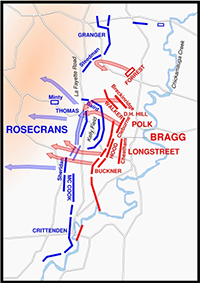
The fighting began the next day, September 18, with skirmishes along Chickamauga Creek. Bragg's men succeeded in crossing the creek. Rosencrans, concerned about a breakout, ordered a northern extension of the existing line. Neither side knew exactly where the other was; and on the morning of September 19 the fighting started in earnest. Counterattacks followed attacks, as both armies strove to command the field. As happened often during the Civil War, thick woods proved nearly impossible to fight within, as shots fired wildly often hit not the enemy but a compatriot. Despite a concerted effort to dislodge the Union defensive position, the Confederate force could at the end of the day boast nothing but casualties. 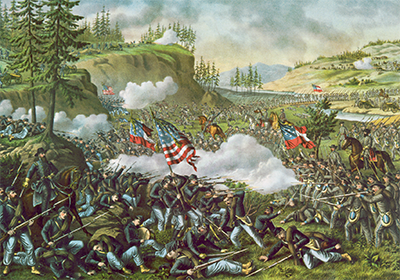
The timely arrival of Lt. Gen. James Longstreet and reinforcements strengthened Bragg's hand, and the commanding general drew up a plan to drive the Union troops from the field. Longstreet followed his orders and attacked in the morning; the other commander, Lt. Gen. Leonidas Polk, did not, delaying for hours his advance. As a result, the Confederate attack was not as effective as it could have been. However, Bragg and his men took advantage of confusion from their enemy when Rosencrans, thinking that he needed to move some of his men to the left end of the line, created a gap in the center that Confederate troops streamed through. 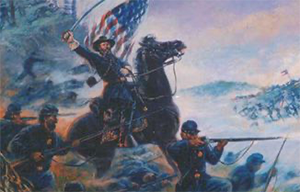
Confusion reigned in the Union camp, as Rosencrans gave the general order for retreat, back to Chattanooga. Confederate troops nearly scored a devastating blow against their Union counterparts on September 20. Only a heroic stand on Horseshoe Ridge (also known as Snodgrass Hill) by Gen. George Thomas and his men saved the Union actions from dissolving into chaos. (For his actions, Thomas earned the moniker the "Rock of Chickamauga.") The Battle of Chickamauga was a Confederate victory because the Union army left the field of battle. However, Confederate casualties exceeded Union casualties, creating yet another Pyrrhic victory. Out of an overall 65,000 men, the Army of Tennessee lost 18,454 (2,312 dead, 14,674 injured, and 1,468 missing or captured). The Union army suffered similar casualties, with losses totaling 16,170 (1,657 dead, 9,756 injured, and 4,747 missing or captured). Bragg took the initiative and ordered his men to follow the retreating Union troops to Chattanooga. Once there, the Confederate troops seized the high ground. Among that high ground was the very high indeed Missionary Ridge. |
|
Social Studies for Kids
copyright 2002–2025
David White




